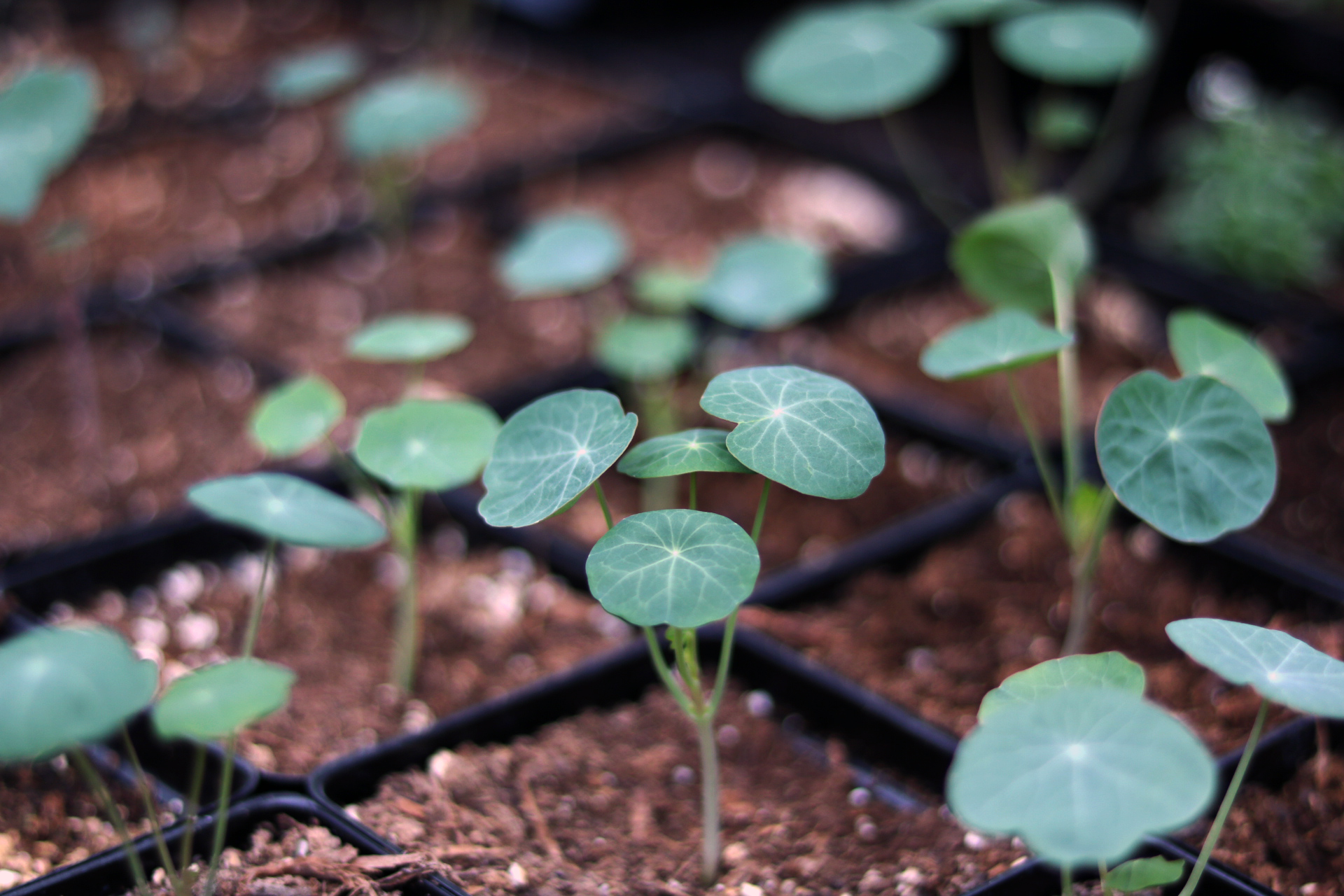

Growing your own plants from seeds is fun, cost effective, and as an extra bonus, adds some green to your home. Here are some suggestions to help you succeed at starting your own seeds in your home.
What You Will Need:
After seedlings have germinated, you can maximize their growth by paying careful attention to water, temperature, and light.
Water
Seedlings need to be kept moist, but they also need oxygen in order to grow. Keep seedlings consistently moist by misting or gentle watering, but do not allow them to become completely waterlogged.
Temperature
Most vegetables prefer night temperatures between 60-65°F. Day temperatures may run approximately 10°F higher. Cool season crops (lettuce, peas, kale, kohlrabi, etc.) also do well at cooler temperatures.
Light
After germination, seedlings must receive bright light. Place your pots or trays in a south-facing window if possible. If a large, bright window is not available, a fluorescent or grow light will work well. If you are using artificial light, most seedlings thrive by keeping the plant 6” away from the tubes, and on for 12-16 hours each day. As seedlings grow, artificial light fixtures will need to be raised to keep the proper distance.
Lettuce, radish, and some peas can spend their entire lifecycle indoors: from seed to your plate! Other vegetables will need to move outdoors as the weather warms.
Plants which have been growing indoors cannot be planted abruptly into the garden without injury. To prevent stress or plant loss, seedlings should be “hardened off” before planting outdoors. This process should be started approximately 2-3 weeks before moving them outdoors permanently. When plants are first moved outdoors, temperatures should be above 55°F and they should be placed in a partially shady spot out of the wind. Begin hardening for short periods of time (one or two hours) and gradually increase the time. After proper hardening, your “adult” seedlings will be ready to live in your garden until they end up on your plate!
Happy gardening!
Retail Hours
Sun: 10:00am - 3:00pm
Mon: CLOSED
Tue: 9:00am - 6:00pm
Wed: 9:00am - 6:00pm
Thu: 9:00am - 6:00pm
Fri: 9:00am - 6:00pm
Sat: 9:00am - 4:00pm